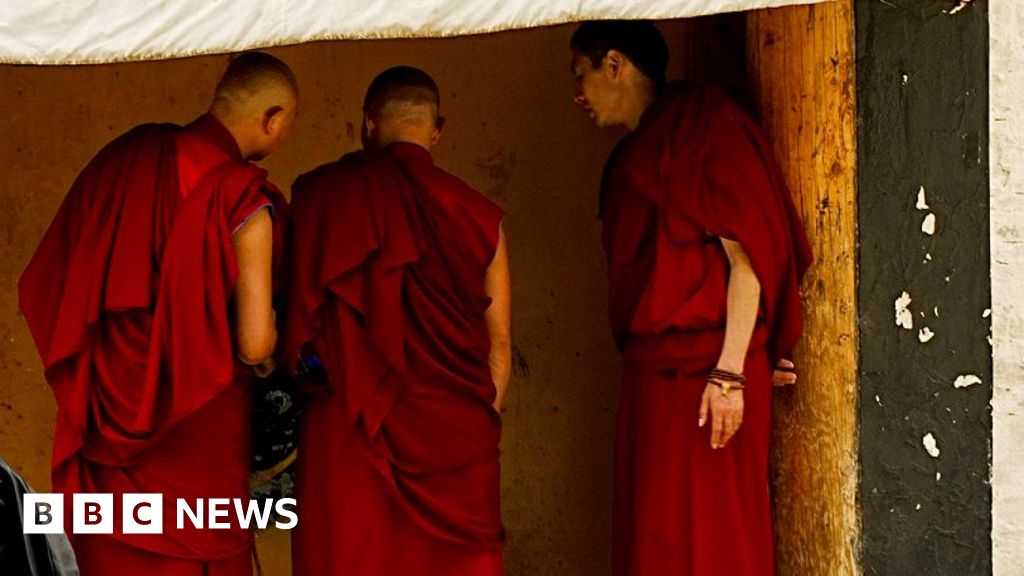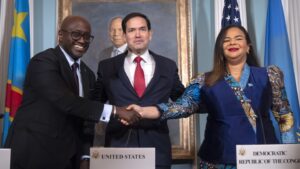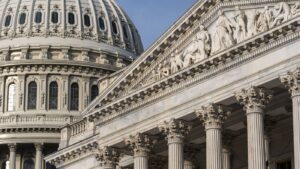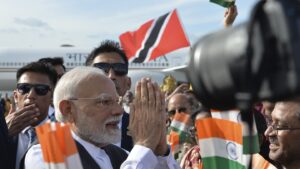
“Be careful, they are watching you.” These words, whispered by a monk at the Kirti monastery in Aba, Sichuan province, encapsulate the tense atmosphere as Tibet remains silent while the Dalai Lama turns 90. The BBC’s visit to this monastery, a longstanding symbol of Tibetan resistance, reveals a community under intense scrutiny.
The Kirti monastery, known internationally since the late 2000s for self-immolations in protest against Chinese rule, is now heavily surveilled. A police station stands at its entrance, and surveillance cameras are strategically placed throughout the compound. Despite the risks, a monk quietly voices his concerns, “Things here are not good for us,” before warning, “Be careful, people are watching you.”
The Historical Context of Tibetan Resistance
Tibet has been under Chinese governance for nearly 75 years since its annexation in 1950. While Beijing has invested in infrastructure to integrate the region with the rest of China, many Tibetans feel their cultural and religious freedoms are being eroded. The Chinese government views Tibet as an integral part of the nation and labels the Dalai Lama, Tibet’s exiled spiritual leader, as a separatist.
The town of Aba, or Ngaba in Tibetan, has been a focal point of resistance. It played a significant role during the 2008 Tibet-wide uprising, where protests escalated into violent clashes, resulting in the deaths of at least 18 Tibetans. The Chinese government claims 22 people died, while Tibetan groups in exile estimate the number to be around 200. Over the years, more than 150 self-immolations have occurred, calling for the Dalai Lama’s return.
Surveillance and Control in Tibetan Areas
Returning to the monastery before dawn, the BBC team witnessed morning prayers, a rare glimpse into the spiritual life of the community. Monks in yellow hats chanted as locals gathered, their presence a testament to the enduring faith of the Tibetan people. However, the monk’s words were stark: “The Chinese government has poisoned the air in Tibet. It is not a good government.”
The Chinese government’s control over Tibet extends to education, with new laws requiring all under-18s to attend state-run schools and learn Mandarin. This policy marks a significant shift for a community where monastic education was once the norm. According to scholar Robert Barnett, these regulations could profoundly impact Tibetan Buddhism, as education becomes centered on Chinese culture and values.
The Dalai Lama’s Succession and Its Implications
The Dalai Lama’s recent announcement regarding his succession plan has been met with mixed reactions globally, but remains censored in China. Living in exile since 1959, the Dalai Lama has advocated for greater autonomy for Tibet rather than full independence. His succession plan suggests that his successor would be chosen from outside China, a move that sets the stage for a confrontation with Beijing.
Beijing has already begun efforts to control the succession process, with propaganda campaigns teaching Tibetans about the “new regulations” for choosing a Dalai Lama. The situation echoes the controversy surrounding the Panchen Lama, where Beijing’s appointed successor is not recognized by Tibetans outside China.
“We are moving to a scenario of the Chinese leader Xi Jinping having total control,” says Robert Barnett. “We are looking at the complete management of intellectual input.”
Two Worlds Under One Sky
The road to Aba, winding through the scenic Himalayan plateau, showcases China’s investment in the region. New infrastructure, including a high-speed railway, aims to boost tourism. However, the pervasive surveillance and control over information highlight the tension between preserving Tibetan culture and Beijing’s demand for unity.
Tourists visiting Aba encounter a blend of ancient traditions and modern surveillance. Facial recognition is required for hotel check-ins, and purchasing petrol involves multiple identification checks. Despite these measures, the Tibetan spirit endures, with many still holding on to their cultural identity.
Looking Ahead: The Future of Tibetan Culture
The future of Tibetan culture remains uncertain as Beijing continues its efforts to integrate Tibet into the broader Chinese framework. The Dalai Lama’s succession could become a pivotal moment in this ongoing struggle. As Tibetans in China face restricted access to information, the global community watches closely.
For many Tibetans, the challenge lies in maintaining their cultural heritage amidst increasing pressure. As Robert Barnett notes, “Beijing wants to turn the lion of Tibetan culture into a poodle.” The question remains: how much of Tibet’s rich cultural identity will survive under these circumstances?






